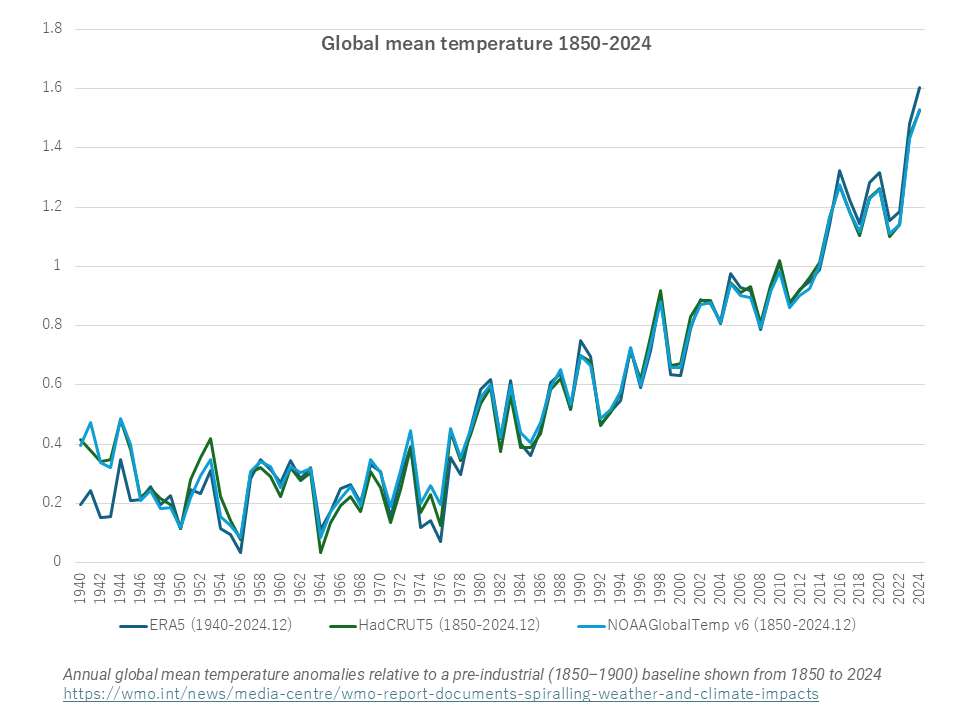Pick Up
1220. Signs of Anthropogenic Climate Change in 2024

1220. Signs of Anthropogenic Climate Change in 2024
A new report from the World Meteorological Organization (WMO) released on March 19th says that signs of anthropogenic climate change reached new heights in 2024, resulting in massive economic and social disruption due to extreme weather, and some of the impacts of climate change are expected to be irreversible for hundreds or even thousands of years.
The report confirms that global mean surface temperatures in 2024 were 1.55 ± 0.13 °C higher than the 1850-1900 average, making it the warmest year in the 175-year observational record and the first calendar year to be more than 1.5 °C higher than pre-industrial levels. The report notes that long-term global warming is currently estimated at 1.34 to 1.41 °C compared to the 1850-1900 baseline, but notes there is a range of uncertainty in the statistics and calls for further research, in coordination with the Intergovernmental Panel on Climate Change (IPCC), to ensure consistent tracking of long-term global temperature changes.
Other highlights of 2024 in the report include:
- Atmospheric carbon dioxide concentrations are at their highest levels in the past 800,000 years.
- Globally, each of the past decades has been the warmest decade on record.
- Each of the past eight years has set a new record for ocean heat content.
- All 18 of the lowest Arctic sea ice extents on record occurred in the past 18 years.
- The three lowest Antarctic sea ice extents occurred in the past three years, with the largest glacier mass losses during the same period.
- The rate of sea level rise has doubled since satellite measurements began.
Atmospheric carbon dioxide concentrations reached 420.0 ± 0.1 ppm (equivalent to 3,276 Gt) in 2023 (the most recent year for which statistics are available), 2.3 ppm higher than in 2022 and 151% of pre-industrial levels (1750). Real-time data from specific locations shows that the levels of three major greenhouse gases—carbon dioxide, methane and nitrous oxide—continue to rise in 2024. Carbon dioxide remains in the atmosphere for generations, raising concerns about its heat-trapping effect.
As climate change progresses, extreme weather events in 2024 destroyed homes, critical infrastructure, forests, farmland, and biodiversity, leading to the highest number of new displacements since 2008. By mid-2024, food insecurity had worsened in 18 countries around the world due to the combined effects of various shocks, including intensifying conflicts, droughts, and rising domestic food prices.
Contributor: IIYAMA Miyuki, Information Program
